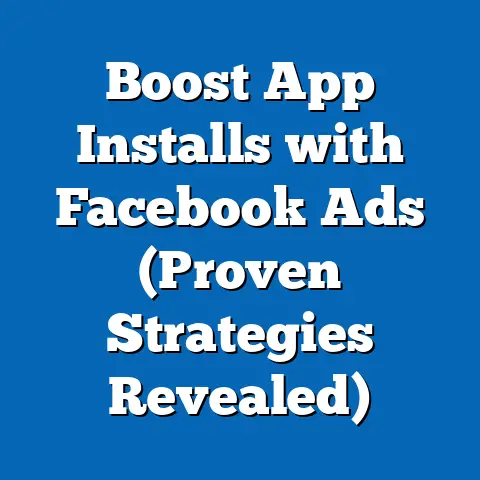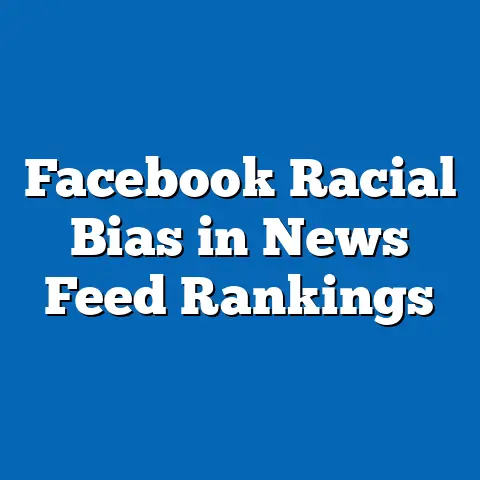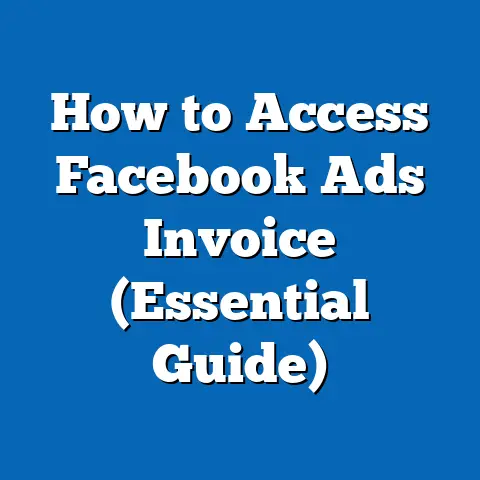Craft Impactful Facebook Ad Bios (Proven Strategies)
In the ever-evolving landscape of digital marketing, the ability to craft highly customized content has become a cornerstone of success, particularly on platforms like Facebook, where billions of users interact daily. A Facebook ad bio—a short, compelling snippet of text accompanying an ad—serves as a critical touchpoint for capturing attention, building brand identity, and driving user action. The customizability of these bios allows businesses to tailor their messaging to specific audiences, leveraging demographic data, behavioral insights, and cultural trends to maximize impact.
Defining Characteristics of Impactful Facebook Ad Bios
An impactful Facebook ad bio is concise yet powerful, typically limited to a few sentences or 125 characters in primary text fields, depending on the ad format. It must distill a brand’s message into a compelling hook that grabs attention amidst the noise of a user’s newsfeed. Key characteristics include clarity, relevance, emotional resonance, and a strong call-to-action (CTA).
Clarity ensures the message is immediately understood, avoiding jargon or ambiguity. Relevance ties the bio to the target audience’s needs or interests, often leveraging data from Facebook’s robust targeting tools. Emotional resonance—whether through humor, urgency, or empathy—creates a connection that prompts engagement, while a CTA directs users toward a specific action, such as clicking a link or making a purchase.
These elements are not static; they must adapt to platform updates, user expectations, and competitive trends. For instance, a bio that worked in 2015 may feel outdated today due to shifts in language style or user attention spans. Understanding these defining traits provides a foundation for crafting bios that stand out in a crowded digital space.
Historical Context: The Evolution of Facebook Advertising
Facebook launched its advertising platform in 2007 with “Flyers,” a rudimentary system allowing businesses to promote events or products to specific user groups. These early ads lacked the sophistication of today’s formats, with minimal customization and basic text fields. However, they marked the beginning of social media as a marketing frontier, capitalizing on the platform’s growing user base, which surpassed 50 million by late 2007.
The introduction of the News Feed in 2006 and subsequent ad integration transformed how brands communicated with users. By 2012, Facebook rolled out Sponsored Stories and refined targeting options, enabling advertisers to tailor content based on user interests, behaviors, and demographics. Ad bios during this era began incorporating storytelling elements, moving beyond mere product descriptions to narratives that resonated with personal experiences.
The mid-2010s saw further innovation with the launch of carousel ads, video ads, and dynamic product ads, each accompanied by short text fields that demanded creativity and precision. Mobile usage surged, shrinking attention spans and necessitating punchier, visually aligned bios. Today, with over 2.9 billion monthly active users as of 2023 (Statista), Facebook remains a dominant advertising platform, and the ad bio has evolved into a microcosm of branding—requiring a blend of art and science to succeed.
Significant historical events, such as the 2018 Cambridge Analytica scandal, also shaped ad strategies. Public scrutiny over data privacy led to stricter regulations and a push for transparency in messaging, influencing how bios are written to build trust. Additionally, cultural movements like #MeToo and Black Lives Matter prompted brands to adopt more inclusive and socially conscious language in their ads, reflecting broader societal values.
Societal Implications of Targeted Ad Bios
The customizability of Facebook ad bios, while a powerful tool for engagement, carries significant societal implications. On one hand, targeted messaging fosters relevance, ensuring users see content aligned with their interests or needs. This hyper-personalization can enhance user experience, as evidenced by a 2021 study from McKinsey, which found that 71% of consumers expect personalized interactions, and 76% get frustrated when they don’t receive them.
On the other hand, excessive personalization raises ethical concerns about privacy and manipulation. When bios are crafted using detailed user data—such as browsing history or location—there’s a risk of overstepping boundaries, potentially alienating audiences who feel “watched.” The same McKinsey study noted that 64% of consumers are concerned about how their data is used, highlighting a tension between customization and trust.
Moreover, targeted bios can contribute to echo chambers, where users are repeatedly exposed to content reinforcing their existing beliefs. This phenomenon, amplified by Facebook’s algorithm, has been linked to polarization on issues ranging from politics to public health, as seen during the COVID-19 pandemic with misinformation campaigns. Marketers must therefore balance personalization with ethical considerations, ensuring bios promote inclusivity and avoid exploitative tactics.
From a cultural perspective, ad bios reflect and influence societal norms. For instance, the rise of sustainability as a consumer priority has led to bios emphasizing eco-friendly practices, shaping public discourse on environmental responsibility. Similarly, diverse representation in ad language and imagery can challenge stereotypes, fostering a more equitable digital space. These implications underscore the responsibility marketers bear in crafting content that not only sells but also contributes positively to society.
Proven Strategies for Crafting Impactful Facebook Ad Bios
Creating a successful Facebook ad bio requires a strategic approach informed by data, creativity, and platform-specific best practices. Below are proven strategies, supported by research and industry insights, to maximize engagement and conversion rates.
1. Know Your Audience: Leverage Data for Precision Targeting
Understanding your target audience is the bedrock of an effective ad bio. Facebook’s Audience Insights tool provides demographic data, interests, and behaviors, allowing marketers to segment users with precision. For example, a bio targeting Gen Z might use casual, meme-inspired language, while one for Baby Boomers could emphasize trust and value.
A 2022 report by HubSpot found that ads with personalized messaging achieve 20% higher click-through rates (CTR) compared to generic content. Start by identifying pain points or desires specific to your audience—whether it’s affordability for millennials or convenience for busy parents—and tailor your bio accordingly. However, avoid overgeneralizations; not all members of a demographic group share identical preferences, so test variations to refine your approach.
2. Lead with a Hook: Capture Attention in Seconds
With users scrolling through hundreds of posts daily, your bio must grab attention instantly. Start with a bold statement, question, or statistic that piques curiosity. For instance, “Struggling to sleep? Try this one trick!” immediately addresses a common issue while promising a solution.
Research from WordStream indicates that ads with question-based headlines see a 17% higher CTR on average. Pair this hook with relevant visuals—since ads with images or videos generate 65% more engagement (Hootsuite, 2023)—to create a cohesive first impression. Remember, the goal is to stop the scroll, so prioritize impact over subtlety in those first few words.
3. Emphasize Value: Highlight Benefits, Not Features
Consumers care about how a product or service improves their lives, not just its specifications. An effective bio focuses on benefits, answering the implicit question, “What’s in it for me?” For example, instead of saying, “Our blender has a 500-watt motor,” try “Blend smoothies in seconds with our powerful tool!”
A study by Nielsen (2021) found that value-driven messaging increases purchase intent by 30%. Use action-oriented language to convey urgency or exclusivity, such as “Save 50% today only!” or “Join 10,000+ happy customers.” This approach taps into emotional drivers like fear of missing out (FOMO) or the desire for social proof, boosting conversion rates.
4. Incorporate a Clear Call-to-Action (CTA)
A strong CTA is non-negotiable for driving user action. Whether it’s “Shop Now,” “Learn More,” or “Sign Up Free,” the CTA should be specific and aligned with the ad’s objective. Place it at the end of the bio or as a button (if the ad format allows) to maintain a logical flow.
Data from Sprout Social (2023) shows that ads with explicit CTAs achieve 22% higher engagement rates. Experiment with tone—urgent CTAs like “Don’t Wait!” work well for limited-time offers, while softer ones like “Discover More” suit informational campaigns. Additionally, ensure the CTA matches the landing page experience to avoid user frustration and drop-off.
5. Use Emotional Triggers: Connect on a Human Level
Emotion drives decision-making, and a bio that evokes feeling—whether joy, fear, or nostalgia—is more likely to resonate. For instance, a pet product ad might say, “Give your furry friend the love they deserve!” to tap into affection and responsibility. Similarly, a financial service could use, “Secure your family’s future today,” invoking safety and urgency.
According to a 2020 Harvard Business Review study, emotionally charged ads are twice as likely to go viral. However, authenticity is key; forced or manipulative language can backfire, eroding trust. Analyze your audience’s values and pain points to identify which emotions—humor for younger users or security for older ones—will drive the strongest response.
6. Keep It Concise and Scannable: Respect Attention Spans
Given the fast-paced nature of social media, brevity is essential. Aim for 1-2 sentences or under 125 characters for primary text, ensuring the core message is digestible at a glance. Use line breaks or emojis sparingly to enhance readability without cluttering the bio.
A 2023 study by Buffer revealed that ads with shorter copy (under 50 words) see 15% higher engagement on mobile devices, where most Facebook users access the platform. Avoid dense paragraphs or complex phrasing; instead, prioritize punchy, straightforward language that communicates value instantly.
7. Test and Optimize: Embrace A/B Testing
No single bio formula guarantees success across all audiences or industries. A/B testing—running multiple versions of an ad with slight variations in copy, tone, or CTA—helps identify what works best. For example, test “Save Now!” versus “Get Your Discount!” to see which drives more clicks.
Facebook’s Ads Manager provides robust analytics on metrics like CTR, conversion rate, and cost-per-click (CPC), enabling data-driven decisions. A 2022 report by Social Media Examiner found that marketers who regularly test ad copy improve performance by up to 25%. Continuously refine your bios based on results, adapting to trends and user feedback.
8. Align with Visuals: Create a Cohesive Ad Experience
A bio doesn’t operate in isolation; it must complement the ad’s image, video, or carousel. If the visual depicts a happy family, the bio should reinforce that warmth with phrases like “Make memories together!” rather than a cold, transactional tone. Consistency between text and visuals builds trust and clarity.
Research by eMarketer (2023) shows that ads with aligned messaging and imagery achieve 40% higher recall rates. Review the ad as a whole during creation, ensuring the bio enhances rather than contradicts the visual story. This synergy is especially crucial for mobile users, where screen space is limited, and first impressions are fleeting.
9. Incorporate Social Proof: Build Credibility
Including elements of social proof—such as customer reviews, ratings, or user numbers—can make a bio more persuasive. Phrases like “Trusted by 5,000+ customers” or “Rated 4.9/5 stars!” reassure users of a product’s legitimacy, reducing purchase hesitation.
A 2021 BrightLocal survey found that 79% of consumers trust online reviews as much as personal recommendations. When space allows, weave social proof into your bio, or use it in secondary text fields if the primary message focuses on a hook or CTA. Be authentic—fabricated claims can damage brand reputation if exposed.
10. Stay Current: Adapt to Trends and Platform Updates
Facebook’s algorithm, ad formats, and user behaviors evolve constantly, and bios must keep pace. Monitor trending hashtags, slang, or cultural references that resonate with your audience, integrating them naturally into your copy. For instance, during major events like the Olympics, a sports brand might reference “going for gold” to tap into topical excitement.
Additionally, stay informed about platform changes, such as new character limits or ad placement options. A 2023 update prioritized video content in the News Feed, prompting marketers to pair bios with engaging thumbnails or captions. Following industry blogs or joining marketing communities can provide real-time insights to keep your bios relevant.
Generational Nuances in Crafting Ad Bios
Generational differences play a significant role in how ad bios are perceived and should influence customization strategies. Below, we explore how to tailor messaging for key generational cohorts, acknowledging the diversity within each group while drawing on broad trends supported by research.
Baby Boomers (Born 1946-1964)
Baby Boomers, shaped by post-World War II optimism and economic growth, often value stability, quality, and trust in their purchasing decisions. Bios targeting this group should emphasize reliability and customer service, using formal yet approachable language like “Experience unmatched quality—shop with confidence!” A 2022 AARP study found that 68% of Boomers prioritize brands with clear, honest messaging.
They are less likely to engage with trendy slang or memes, preferring straightforward value propositions. Focus on benefits like durability or long-term savings, and consider CTAs like “Call Us Today” if your business offers phone support, as many Boomers appreciate direct communication. However, don’t assume all are tech-averse; many are active on Facebook, with 70% using the platform daily (Pew Research, 2023).
Generation X (Born 1965-1980)
Gen X, often described as the “latchkey” generation, grew up during economic uncertainty and the rise of dual-income households, fostering independence and skepticism toward marketing. Bios for this cohort should be authentic and no-nonsense, avoiding hype. A line like “Cut through the clutter—get real results” can appeal to their desire for efficiency.
They respond well to nostalgia, so referencing cultural touchstones from the ‘80s or ‘90s can create emotional connections. A 2021 Marketing Dive report noted that 54% of Gen Xers engage with ads that evoke personal memories. Balance this with modern relevance, as they are digitally savvy and value convenience in CTAs like “Shop Online Now.”
Millennials (Born 1981-1996)
Millennials, shaped by the internet’s rise and the 2008 financial crisis, prioritize authenticity, social impact, and experiences over material goods. Bios targeting them should highlight purpose-driven branding, such as “Support sustainability with every purchase!” A 2023 Deloitte study found that 60% of Millennials prefer brands aligned with their values.
They are also drawn to humor and relatability, often engaging with witty or self-aware copy. Use conversational tones like “We get it—life’s busy. Simplify with us!” and experiment with emojis or trending phrases, but avoid overuse. Their mobile-first mindset means concise, visually paired bios are critical for engagement.
Generation Z (Born 1997-2012)
Gen Z, the first fully digital-native generation, has grown up amidst smartphones, social media, and global challenges like climate change. They crave authenticity and are quick to spot inauthentic marketing, with 65% valuing transparency over polish (Morning Consult, 2022). Bios should be direct and socially conscious, e.g., “Join the movement—shop eco-friendly!”
They engage with humor, memes, and video content, so bios like “Slay your style game 🔥—shop now!” can resonate if aligned with current slang. Quick, snackable content works best, as their attention span on social platforms averages just 8 seconds (Microsoft, 2020). CTAs should be instant and interactive, such as “Tap to Win!”
Cross-Generational Considerations
While generational trends provide a starting point, individual preferences vary widely due to factors like socioeconomic status, location, and personal interests. Avoid stereotyping by using Facebook’s targeting tools to layer interests or behaviors over age demographics. For instance, a Millennial parent and a Gen X parent may share more in common than two Millennials with different lifestyles.
Testing remains crucial across generations. A bio that works for urban Gen Z may flop with rural counterparts, so analyze performance data to uncover nuanced preferences. Additionally, inclusive language—avoiding gendered terms or cultural insensitivity—ensures broader appeal and mitigates backlash in a hyper-connected world.
Technological and Economic Factors Influencing Ad Bios
Technological advancements have profoundly shaped how Facebook ad bios are crafted and consumed. The rise of mobile devices, with 98% of Facebook users accessing via smartphones (Statista, 2023), demands concise, thumb-friendly copy that pairs with vertical visuals. AI tools like Meta’s Advantage+ also automate ad creation, suggesting bios based on historical data, though human oversight remains essential for emotional nuance.
Economically, fluctuating consumer spending power influences bio messaging. During recessions, as seen in 2008 and post-COVID recovery, bios emphasizing discounts or value—“Get more for less!”—tend to perform better. Conversely, in boom periods, luxury or aspirational language like “Elevate your lifestyle” gains traction. A 2022 PwC report noted that 73% of consumers adjust purchasing based on economic conditions, underscoring the need for adaptive copy.
Platform costs also matter; rising ad spend (average CPC increased 14% in 2023 per WordStream) pressures marketers to optimize bios for maximum ROI. This economic reality pushes smaller businesses toward creative, low-budget strategies like user-generated content mentions in bios, leveraging authenticity over polish.
Cultural and Social Influences on Ad Messaging
Culturally, ad bios reflect and shape societal values, often mirroring dominant narratives or challenging norms. The push for diversity and inclusion, accelerated by social movements, has led to bios using gender-neutral language or highlighting underrepresented groups. A 2021 Adobe study found that 61% of consumers are more likely to engage with brands showcasing diversity in ads.
Socially, the rise of influencer culture and community-driven platforms has influenced bio tone, with conversational, peer-like messaging outperforming traditional sales pitches. Phrases like “Join our fam!” mimic influencer lingo, fostering a sense of belonging. However, cultural missteps—such as tone-deaf references during crises—can trigger viral criticism, as seen in several high-profile brand blunders on social media.
Globalization adds complexity; a bio effective in the U.S. may not translate well in Asia or Europe due to linguistic or cultural differences. Marketers must localize content, adapting idioms and values—e.g., collectivism in Eastern markets versus individualism in Western ones—while maintaining brand consistency.
Implications for Businesses and Society
Effective Facebook ad bios have far-reaching implications for businesses, shaping brand perception, customer loyalty, and revenue. A well-crafted bio can differentiate a company in a saturated market, with 80% of consumers citing unique messaging as a purchase driver (Edelman, 2023). Conversely, poorly executed bios risk alienating audiences, as seen in backlash to insensitive or irrelevant ads.
In the workplace, the demand for skilled digital marketers proficient in ad copywriting has surged, with LinkedIn reporting a 25% increase in such roles from 2020 to 2023. Companies must invest in training or tools to keep pace with platform changes and consumer expectations, balancing automation with human creativity.
Societally, ad bios influence consumer behavior and cultural narratives, from promoting sustainable habits to reinforcing harmful stereotypes if not thoughtfully designed. They also impact mental health; overly idealized messaging can contribute to comparison anxiety, particularly among younger users. Marketers bear a responsibility to prioritize ethical messaging, aligning profit motives with social good.
Forward-Looking Insights: The Future of Facebook Ad Bios
Looking ahead, the trajectory of Facebook ad bios will likely be shaped by emerging technologies and shifting user behaviors, though uncertainties remain. AI-driven personalization will deepen, with tools predicting optimal copy in real-time, but over-reliance risks losing the human touch that drives emotional connection. Voice search and AR/VR integration may also redefine ad formats, requiring bios to adapt to spoken or immersive contexts.
Privacy regulations, such as GDPR and potential U.S. equivalents, will constrain data usage, pushing marketers toward contextual targeting over behavioral. Bios may need to rely more on broad appeal or niche community alignment rather than hyper-specific data points. Additionally, Gen Alpha’s rise as a consumer base by the late 2020s will introduce new linguistic and cultural norms, challenging existing strategies.
Sustainability and authenticity will remain central themes, as consumers increasingly demand transparency. Bios that transparently address supply chains or social impact could become differentiators. Yet, the pace of change—both technological and societal—means flexibility will be key; what works today may not tomorrow.
Conclusion
Crafting impactful Facebook ad bios is both an art and a science, requiring a deep understanding of audience needs, platform dynamics, and broader societal trends. By leveraging proven strategies—such as precision targeting, emotional resonance, and continuous testing—marketers can create bios that not only capture attention but also drive meaningful action. Historical context reveals how far ad messaging has come, from basic flyers to nuanced, data-driven snippets, while generational and cultural nuances highlight the importance of tailored approaches.
The implications of these bios extend beyond business outcomes, influencing cultural norms, consumer behavior, and ethical standards in digital spaces. As technology and user expectations evolve, so too must the strategies behind ad content, balancing innovation with responsibility. While the future holds uncertainties, one truth persists: a well-crafted bio, rooted in relevance and authenticity, remains a powerful tool for connection in an increasingly crowded digital world.





